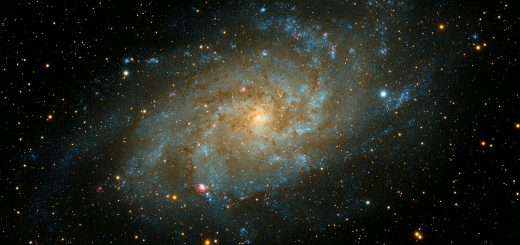How to See How Much Energy Your PC is Using: A Simple Guide

Looking for more amazing products? Check out our online store and explore our collection here! Happy shopping!
Before diving in, please note: This post is for informational purposes only. If you’d like to know more about how we approach topics, feel free to check out our friendly Disclaimer Page.
Hey there, amazing readers! 
We’re committed to delivering quality posts, and your support (even just sticking around despite the ads) means everything to us. So, bear with us, and thanks for helping us keep the good vibes rolling. Now, on to the fun stuff!
TRANSLATE BUTTON AT THE END OF THE ARTICLE
We all know that using a PC comes with its fair share of perks—whether it’s for work, gaming, or endless hours of streaming.
But have you ever wondered just how much energy your trusty computer is using?
Understanding your PC’s energy consumption is not only good for your wallet but also helps you make more eco-friendly decisions.
Whether you’re trying to monitor power usage to cut down on electricity bills or just curious about your system’s efficiency, there are easy ways to see how much energy your PC is using.
Let’s dive in and discover how to track your computer’s energy consumption in a friendly, non-technical way!
Why Should You Care About Your PC’s Power Consumption?
Before we get into the nitty-gritty of tracking energy usage, let’s quickly talk about why it matters.
Cost Savings: Keeping an eye on your energy usage can help lower electricity bills, especially if you use your PC for long hours every day.
Eco-friendliness: Being aware of how much energy your PC uses can encourage you to adopt more energy-efficient habits, reducing your carbon footprint.
Hardware Efficiency: It can help you identify if any of your components (like a graphics card or power supply) are using more energy than necessary.
Now that we’ve covered why you might want to track energy usage, let’s get into how to do it!
Method 1: Using a Power Meter (The Quick and Simple Way)
The easiest way to see how much energy your PC is using is by using an external power meter.
This little device plugs directly into the power socket and your PC’s power cable.
It measures the actual amount of power your PC is drawing from the wall.
Steps:
Purchase a Power Meter: These are inexpensive and available at most electronics or hardware stores.
Plug it In: Connect the power meter to the wall socket and then plug your PC’s power cable into the meter.
Check the Readings: Turn on your PC, and the power meter will display the energy usage in watts (W).
Some meters will also show energy consumption over time in kilowatt-hours (kWh), which is what your electric bill typically measures.
A good power meter will let you track how much energy your PC uses both when it’s idle and when it’s in full power mode (like when gaming or rendering videos).
This gives you a good sense of how much juice your PC is sipping throughout the day.
Method 2: Using Built-in Software (For Laptops and Desktops)
If you’re using a laptop, some built-in tools can help estimate how much power your computer is using.
While these tools aren’t as precise as an external power meter, they can give you a decent idea of energy usage.
For Windows Users:
Battery Report: Windows has a built-in feature called Battery Report that can show you battery health and power usage.
- Open Command Prompt (type
cmdin the start menu). Type
powercfg /batteryreportand press Enter.This will generate a report showing your battery’s efficiency and usage stats, including the amount of energy your PC uses.
- Open Command Prompt (type
Task Manager:
- Open Task Manager (Ctrl + Shift + Esc).
Navigate to the Performance tab and check out the Power Usage section.
Here, you’ll get a basic idea of how much power each component (like the CPU, GPU, etc.) is using.
For Mac Users:
Activity Monitor: MacOS has a built-in app called Activity Monitor, which shows how much power different apps are consuming.
- Open Activity Monitor from Applications > Utilities.
Under the Energy tab, you’ll see a list of applications and their energy impact.
It won’t give you a precise wattage, but it will help you see which apps drain the most power.
Method 3: Using Software Tools for Detailed Monitoring
For more advanced users, there are software tools that can give you detailed reports on how much power your PC is consuming, and even break down energy usage by individual components like the CPU, GPU, or hard drive.
For Windows:
HWMonitor: This free software monitors all the vital stats of your PC, including voltage, temperature, and power usage (for compatible hardware).
Open Hardware Monitor: A free, open-source program that can give you details on the power usage of different components of your computer, including CPU, GPU, and hard drives.
For Mac:
Intel Power Gadget: If you have an Intel processor, you can download this tool to monitor power usage.
It gives you insights into how much energy your CPU is consuming.
Method 4: Checking Your Power Supply Unit (PSU)
If you’re into building PCs or simply want a more DIY approach, you can calculate the power usage based on your Power Supply Unit (PSU).
The PSU label on your PC gives an estimate of the maximum power it can provide to your system.
For example, if your PSU is rated at 650 watts, that’s the maximum it can supply to your entire system.
But keep in mind, your PC won’t always draw this maximum amount of power—it depends on what you’re doing (like gaming vs. just browsing).
How to Estimate Usage:
Find Your PSU Rating: Check the label on your power supply for its wattage rating.
Consider Your Components: High-performance components like gaming GPUs, powerful CPUs, and additional hard drives can increase power usage.
Estimate the Load: If you’re using the PC for basic tasks (web browsing or word processing), the energy consumption will be much lower than if you’re gaming or editing videos.
You can also use online calculators (like OuterVision or PCPartPicker) to estimate your total power usage based on the components in your PC.
Conclusion:
There you have it!
Tracking how much energy your PC uses can be as simple as plugging in a power meter or using some built-in software tools.
If you’re serious about monitoring energy usage, an external power meter will give you the most accurate results.
If you just want a general idea, built-in software or using your PSU’s power rating is a good place to start.
Next time you fire up your PC, you might be surprised at just how much energy it’s using!
By being mindful of your energy consumption, you can make smarter choices that benefit your wallet and the planet.
So, go ahead, give these methods a try, and see just how efficient your system is!

The Enlightenment Journey is a remarkable collection of writings authored by a distinguished group of experts in the fields of spirituality, new age, and esoteric knowledge.
This anthology features a diverse assembly of well-experienced authors who bring their profound insights and credible perspectives to the forefront.
Each contributor possesses a wealth of knowledge and wisdom, making them authorities in their respective domains.
Together, they offer readers a transformative journey into the realms of spiritual growth, self-discovery, and esoteric enlightenment.
The Enlightenment Journey is a testament to the collective expertise of these luminaries, providing readers with a rich tapestry of ideas and information to illuminate their spiritual path.
Our Diverse Expertise
While our primary focus is on spirituality and esotericism, we are equally passionate about exploring a wide range of other topics and niches 

To ensure we provide the most accurate and valuable insights, we collaborate with trusted experts in their respective domains 
Our blog originally focused on spirituality and metaphysics, but we’ve since expanded to cover a wide range of niches. Don’t worry—we continue to publish a lot of articles on spirituality! Frequently visit our blog to explore our diverse content and stay tuned for more insightful reads.
Hey there, amazing reader! 
Check out our store here and take a peek at some of our featured products below! Thanks for being awesome!










